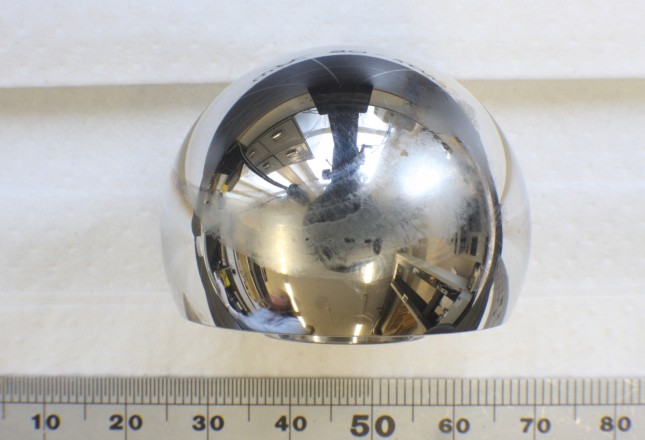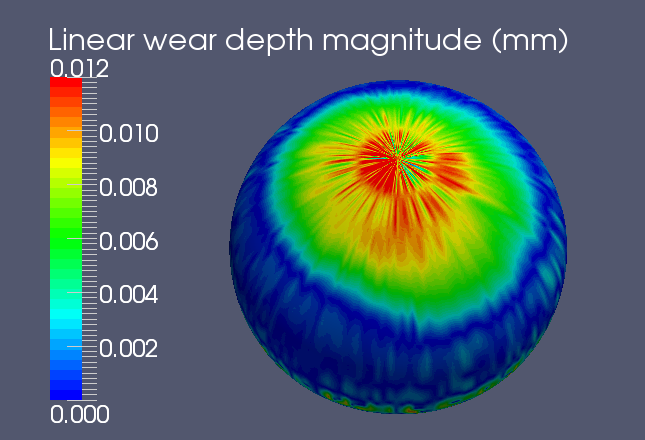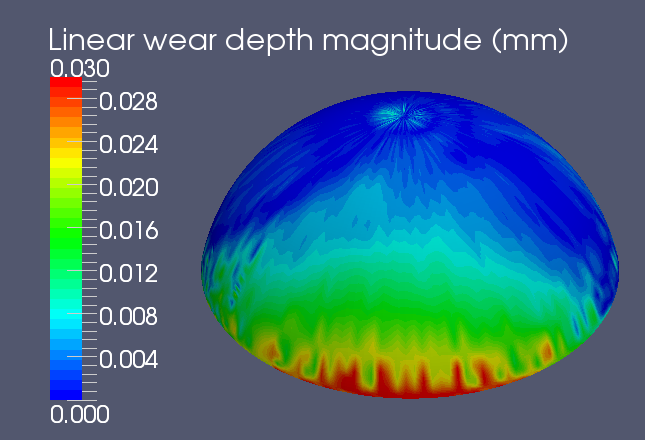
Projects
Various projects from the archive
Wear assessment of retrieved hard-on-hard
hip implants
Introduction: The most common cause of premature failure of joint replacements is aseptic loosening, resulting from an immune response to particle debris produced by wear of the implant components. The retrieval and analysis of such implants helps to establish an understanding of the cause of implant failure.
This study used 3D measurements together with a least-squares analysis to assess the location and severity of wear of a retrieved femoral head and acetabular cup component. The methodology was first validated using worn samples of which the wear volume had been previously determined using gravimetric methods.
Methods: A Coordinate Measuring Machine (CMM) was used to measure the surface coordinates of a worn metal-on-metal femoral head and acetabular cup. These samples had previously undergone wear testing in a hip simulator and gravimetric methods used to determine the wear volume (Depuy International).
A non-linear least squares method was used to find the spherical centre of the components. This fit was modified to exclude points of both abrasive and adhesive wear such to determine the “unworn” centres. Knowing the unworn centre, both the linear wear depth and volumetric wear were calculated.
Results: The results compared extremely well with the gravimetric analysis, with a maximum error of ~20%. This shows that the current method has an accuracy close to gravimetric methods, but can be used to analyse retrieved implants, where gravimetric methods cannot.
To date this methodology has been used successfully on over 25 retrieved head and cup samples.





